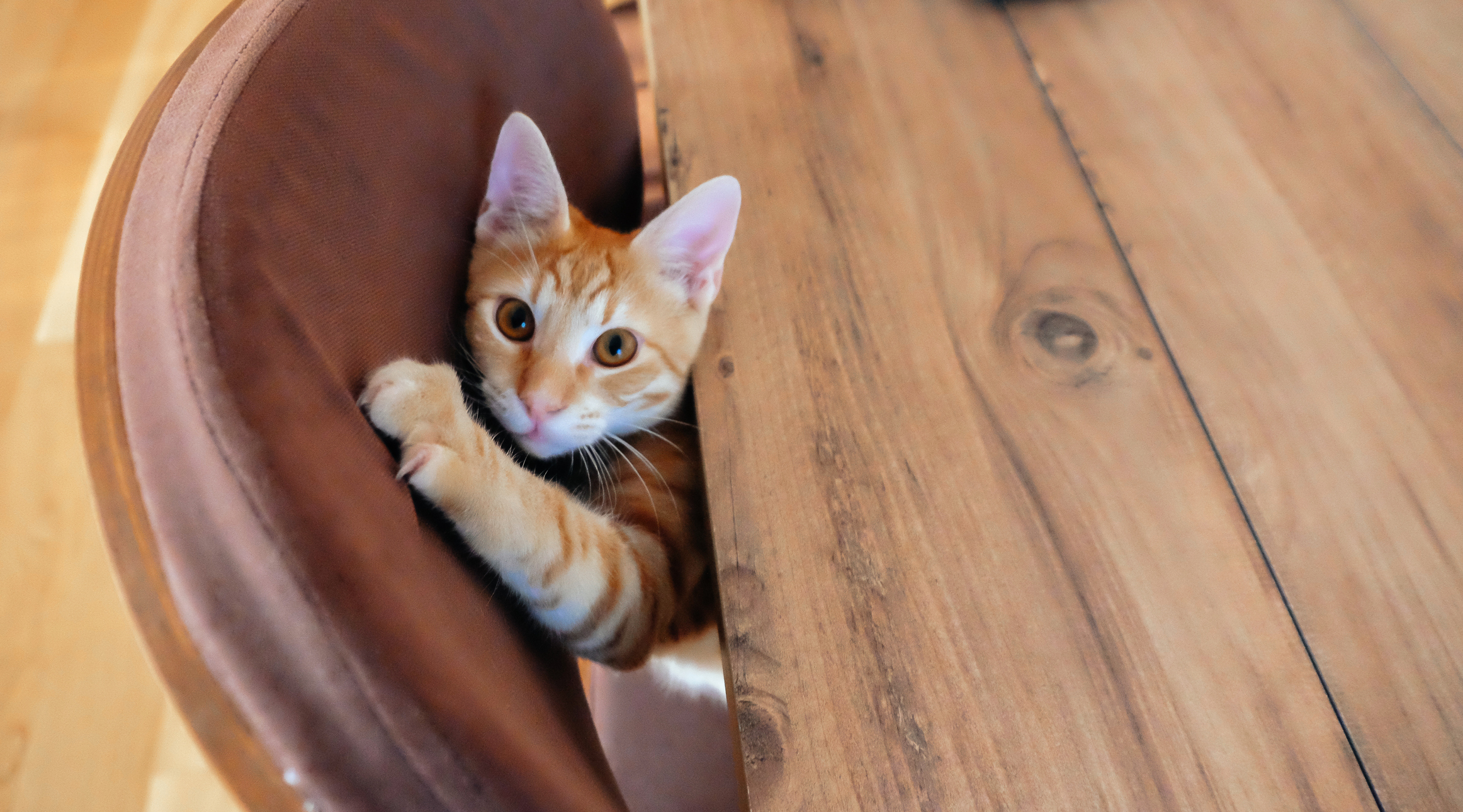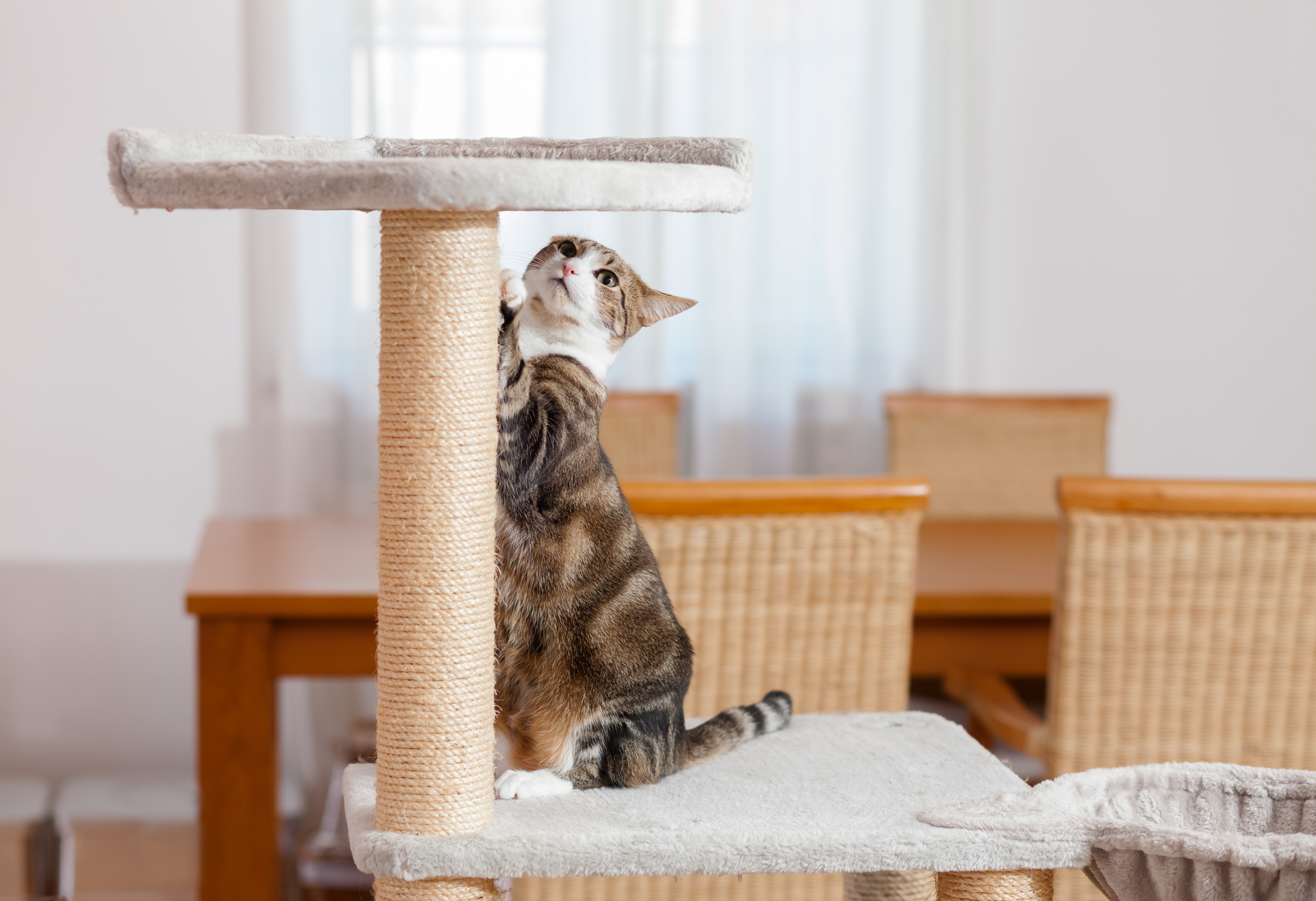
Use These Tips to Keep Your Cat's Claws Away from the Furniture
Cats are cuddly, fuzzy and soft…that is, apart from their claws! Cat claws are a major point of concern for pet parents because of their capacity for destruction—namely, toward your furniture and rugs.
It may seem like your furry friends use their claws for evil, particularly when they target your new leather couch or antique dining room table, but they’re merely doing what comes naturally to them. Also, rarely but occasionally a cat can cause infection and pain to their owners when they get in the way of those kitty claws. Fortunately, there are some pretty simple ways you can stop your cat from using your furniture as a scratching post and encourage them to use their nails for good!
Why do cats scratch, anyway?

The first thing to consider is why cats scratch to begin with. When you wake up to discover your couch cushions ripped to shreds or your table legs gouged and scraped, it can be easy to think your cat destroyed your furniture out of spite or for fun. But this isn’t the case—cats actually scratch for a few important reasons.
One of the biggest reasons cats scratch is to clean and sharpen their claws. A cat’s nails develop a brittle outer layer that needs to be shed regularly. Scratching helps your cat get rid of this layer to make room for the healthier, stronger claw beneath. If cats don’t scratch, their claws could grow too long and cause a puncture wound or a painful ingrown nail.
Cats also scratch on things because it helps them communicate with other cats. When cats sink their claws into a surface, glands in their paws deposit scents that help your kitty mark their territory and show other cats that they were there.
Finally, cats scratch because it just feels good! Most cats will scratch immediately after waking up from a nap to get a good stretch in and activate their muscles.
But why furniture? What drives our furry friends to target some of our most prized—and expensive—possessions? In the wild, cats seek out sturdy, tough materials like wood to leave their scent markers and sharpen their nails. In your home, the arm of your couch or leg of the dining room table are the next closest thing they can find.
Tips for deterring destructive scratching
Nothing you do will stop your cat from scratching entirely. The behavior is rooted in their core instincts. Therefore, you’ll need to work with the scratching instead of against it to save your furniture.
If your cat has begun targeting your furniture as their scratching spot, don’t despair! Use these tips to curb this habit and redirect your cat’s attention to something they can scratch to their heart’s delight.

- Get lots of scratching posts: If you want your cat to stop scratching your furniture, you’ll need to provide them with something that is safe to scratch on. Get multiple scratching posts for your home, ideally placing one in each room where your cat tends to scratch. Some cats prefer different types of scratching posts, such as tall, vertical ones or horizontal or angular ones that lay on the floor. Pay attention to your cat’s scratching style to see which type of post they might like best. There are also different types of scratching post materials, including cardboard, wood and carpet. If your feline friend seems to prefer a particular type of material to scratch on (like your new coarse rug!) then try to find a scratching post that mimics that material. Scratching posts with a toy like a feather or ball on the end may also encourage your cat to scratch there.
- Don’t yell or punish: Avoid scolding your cat for scratching on the furniture. Instead, redirect your cat’s attention using a toy or placing them next to the scratching post when you catch them in the act. Train your cat to love the scratching post using positive rewards. When they use the post, give them a treat. You may also find success in rubbing catnip on the post for a few days to draw your cat’s attention.
- Use other deterrent methods: Use other forms of deterrents on your furniture in tandem with scratching post training for the best results. Placing double-sided tape along the furniture your cat likes to scratch is likely to keep them away, since cat’s paws are very sensitive, and they won’t like the stickiness. Covering the furniture with aluminum foil may also work (although only in the short term, since it’s uncomfortable for you to live with, as well!). There are also scratch deterrent sprays that are safe for cats but cover the furniture in a scent your cat won’t like, helping them stay away.
The process of teaching your cat to scratch on scratching posts and not furniture will require time and patience. However, eventually, your cat should learn the appropriate way to scratch, and your furniture and carpets will be safe.


